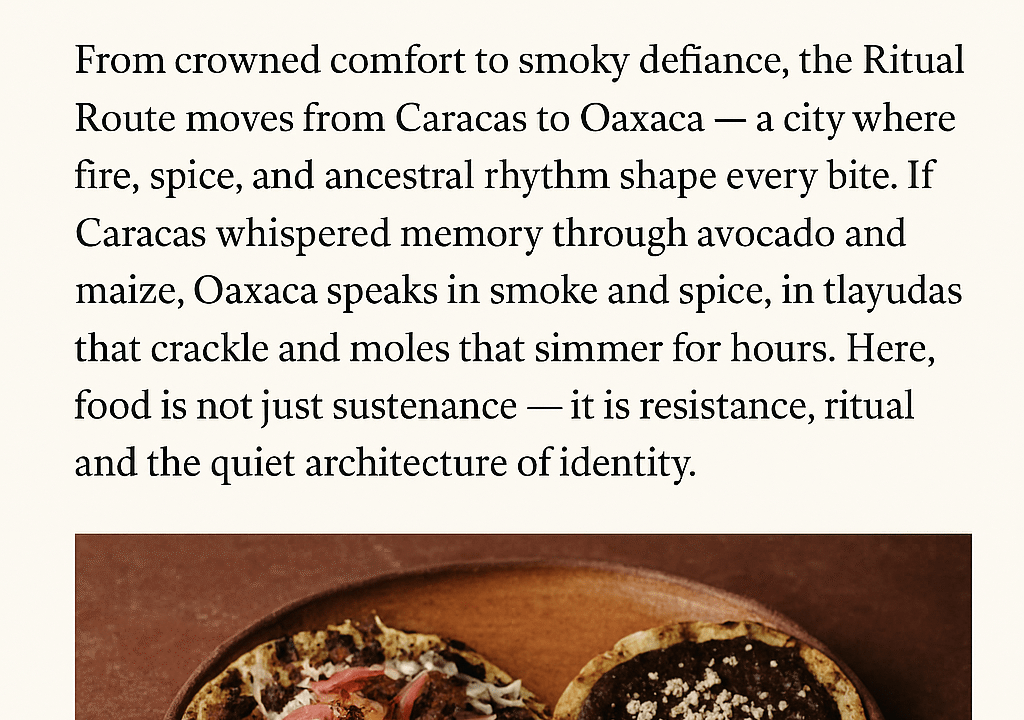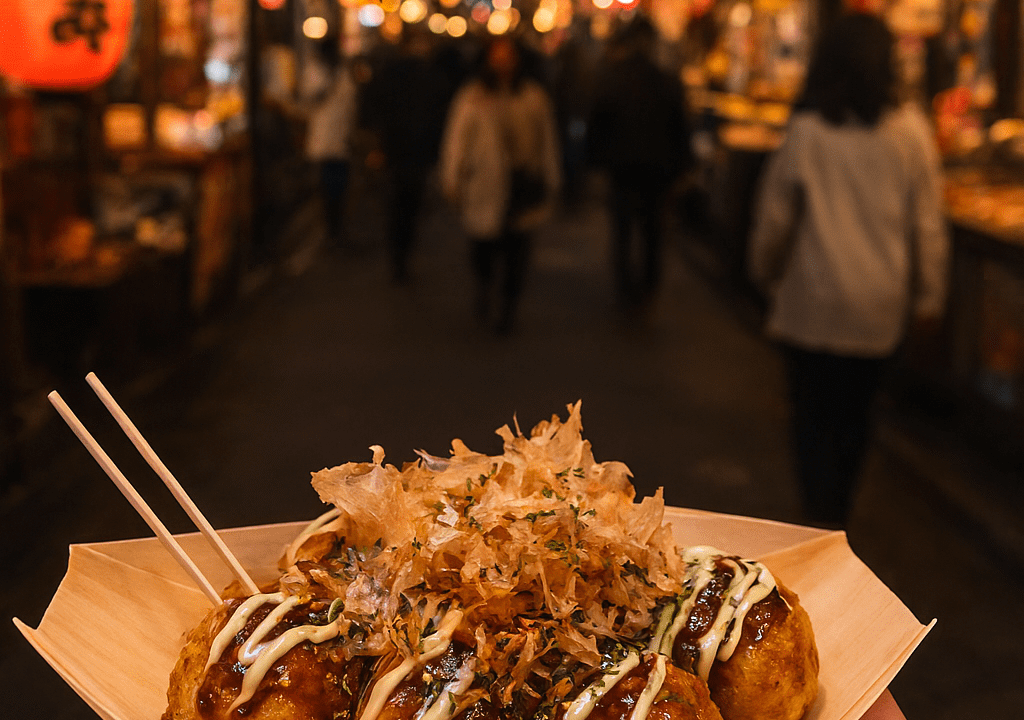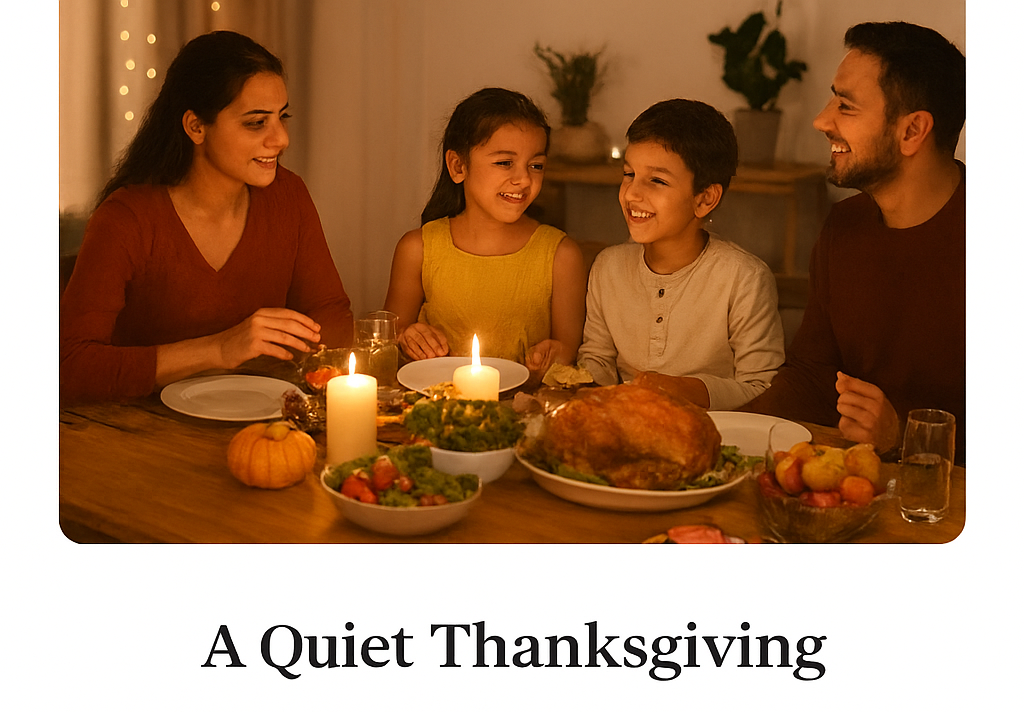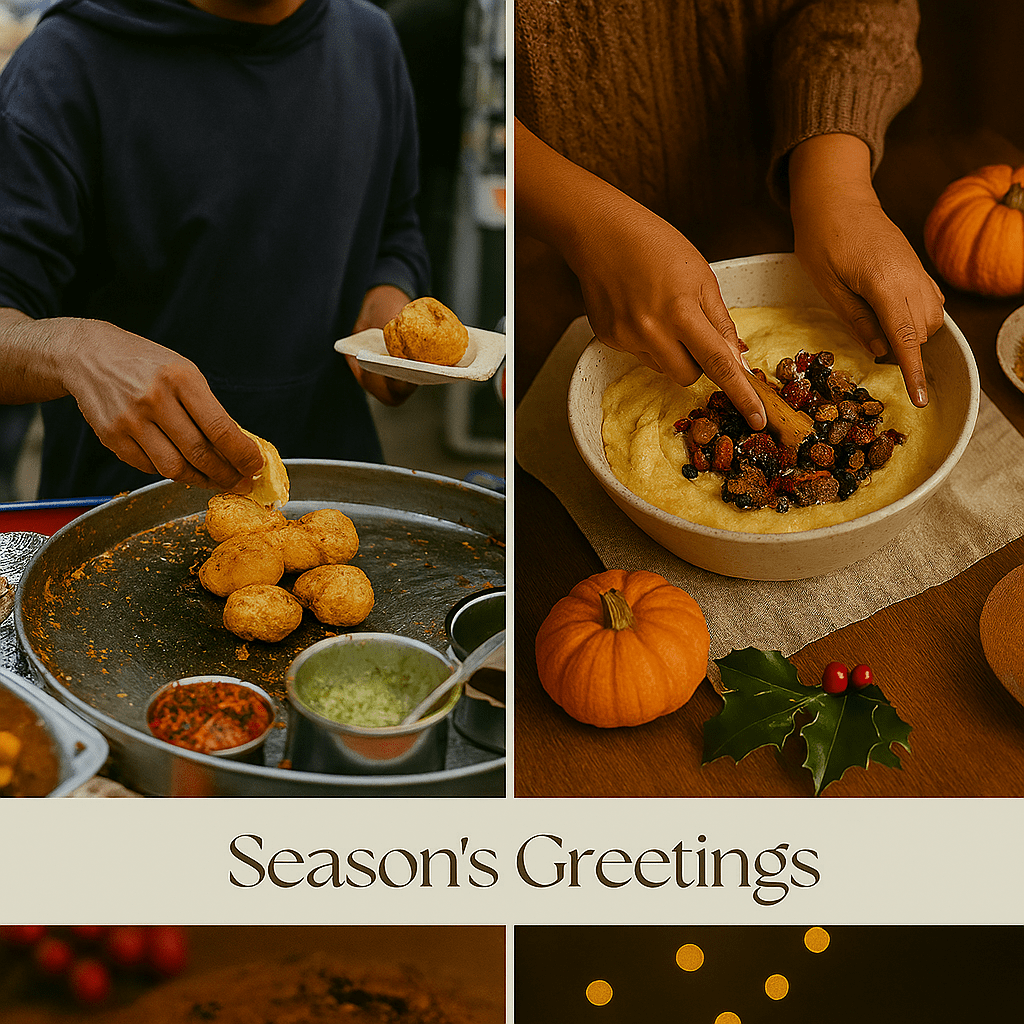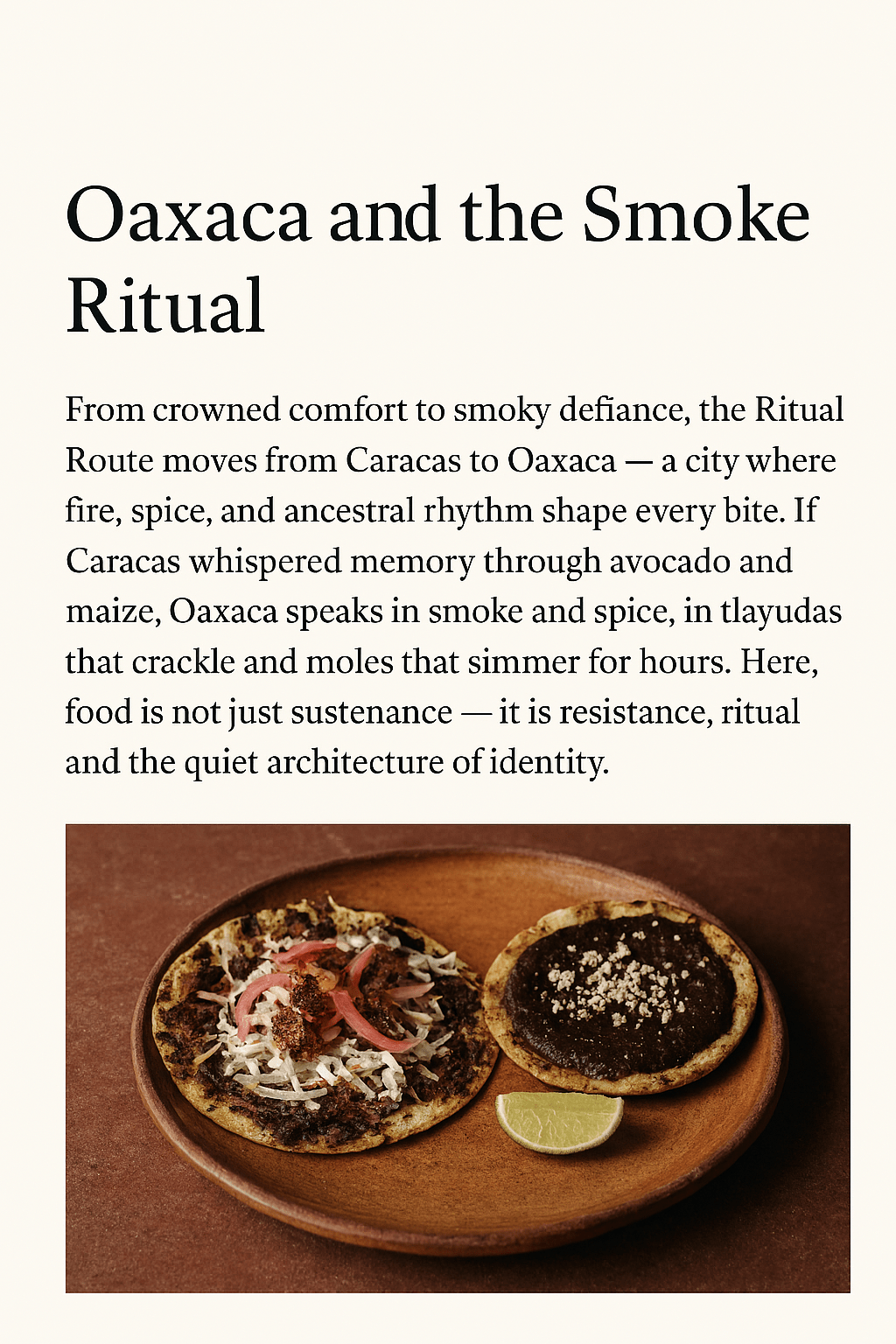She wore glitter like armor.
Not to dazzle, but to deflect.
In Manila, street food isn’t just flavor—it’s a shield, a song, a survival script.
From the smoky defiance of Oaxaca to the crowned comfort of Caracas, the trilogy finds its final beat here: in the neon-lit alleys of Quiapo, where skewers sizzle, banana cues caramelize, and stories simmer. Manila’s streets are alive with contradictions—grief wrapped in glitter, hardship softened by sweetness, and resilience fried into every bite.
The Renaming Ritual
Isaw. Betamax. Adidas.
Street food in Manila often carries playful names—borrowed from pop culture, shapes, or everyday symbols.
This isn’t culinary irony. It’s coded resilience.
Vendors transform humble ingredients into stories, renaming them to spark curiosity and connection.
But beyond the skewers, there’s a gentler rhythm:
- Banana Cue — plantains glazed in caramelized sugar, skewered not for irony but for indulgence.
- Turon — crisp spring rolls filled with banana and jackfruit, golden pockets of joy.
- Taho — silken tofu with syrup and sago pearls, a morning ritual in a cup.
Each name is a record.
Each flavor, a return.
Not of currency, but of courage.
Street food here is an economy of trust: a few pesos exchanged for a taste of belonging. The renaming ritual turns survival into shared humor, and scarcity into creativity.
Each flavor carries its own rhythm—sometimes survival, sometimes joy. In investing, too, withdrawals and dividends carry echoes of risk and return. Sharath’s Shadow: The SWP Mirage explores this mirage in portfolios.”
Glitter and Grief
Manila’s street food glows under fluorescent halos.
But behind the sparkle lies grief—of displacement, of debt, of dreams deferred.
You taste it in the vinegar dip, sharp and cleansing.
You hear it in the vendor’s rhythm, the clatter of skewers and frying pans.
You feel it in the pause between bites, when silence lingers longer than smoke.
The glitter is not frivolous—it’s defiance. A way to shine even when shadows loom.
Sweet Shields
Vegetarian-friendly staples soften the grit of Manila’s alleys, offering sweetness as a counterpoint to the savory smoke:

IC: www.nipino,com
- Banana Cue: Plantains glazed in caramelized sugar, skewered not for irony but indulgence. Each bite is a shield—golden armor against hunger, a reminder that sweetness can be as sustaining as spice. Banana cue vendors often line the edges of Divisoria, their skewers glowing like lanterns in sugar glaze.
-

Turon _ Traditional deep fried dessert from Philippines IC: www.tasteatlas.com - Turon: Crisp spring rolls filled with banana and jackfruit. They crackle with laughter, folded into pastry, carrying joy in portable pockets. Turon is not just dessert—it’s a handheld celebration, a festival wrapped in filo. Turon is festival food—sold at fairs, school gates, and bus stops, carrying joy in portable form.
-

TAHO _ Philippines Street food-silken tofu with sago pearls and brown sugar syrup -IC: you tube.com - Taho: Silken tofu layered with syrup and sago pearls, sold in cups at dawn. Vendors call out “Taho!” in the morning streets, their voices echoing like hymns. It is comfort in liquid form—warm, gentle, and restorative. Taho is a morning ritual; vendors balance aluminum buckets, calling out “Taho!” as children and workers gather for comfort before the day begins.
These dishes remind us that resilience isn’t only savory—it can be sweet, soft, and sustaining. In a city where grief often lingers, sweetness becomes a shield, a way to soften hardship and preserve hope.
Sweet shields are more than food—they are rituals of care. They show that survival is not only about enduring bitterness but also about finding sweetness in the everyday.
Practical Tips
- Where to eat: Quiapo night market, Cubao Expo, and Divisoria’s bustling lanes
- What to try: Banana cue, turon, taho, kwek-kwek (vegetarian-friendly if egg is acceptable)
- When to go: Dusk—when the city softens, grills awaken, and neon lights turn alleys into stages
- How to pace it: Start with taho, pause for turon, end with banana cue for balance.
Trilogy Echo
- Caracas: “Cream. Crown. Caracas.” — comfort as sovereignty
- Oaxaca: “Oaxaca and the Smoke Ritual” — defiance as flavor
- Manila: “Glitter, Grief, and Grill” — longing as ledger
Together, they form a ritual route: three cities, three flavors, three ways of surviving. Each post is a beat. Together, they are a trilogy of taste and tenacity.
Follow the Ritual Route.
From crowned comfort in Caracas to smoky defiance in Oaxaca to glittering grief in Manila—each dish is a story, each blogpost a rhythm. Manila closes the trilogy arc, but the taste lingers—waiting for the next city to rise.
And revisit the earlier beats of the trilogy:
- Caracas Street Food Diaries — crowned comfort
- Oaxaca and the Smoke Ritual — smoky defiance
.

